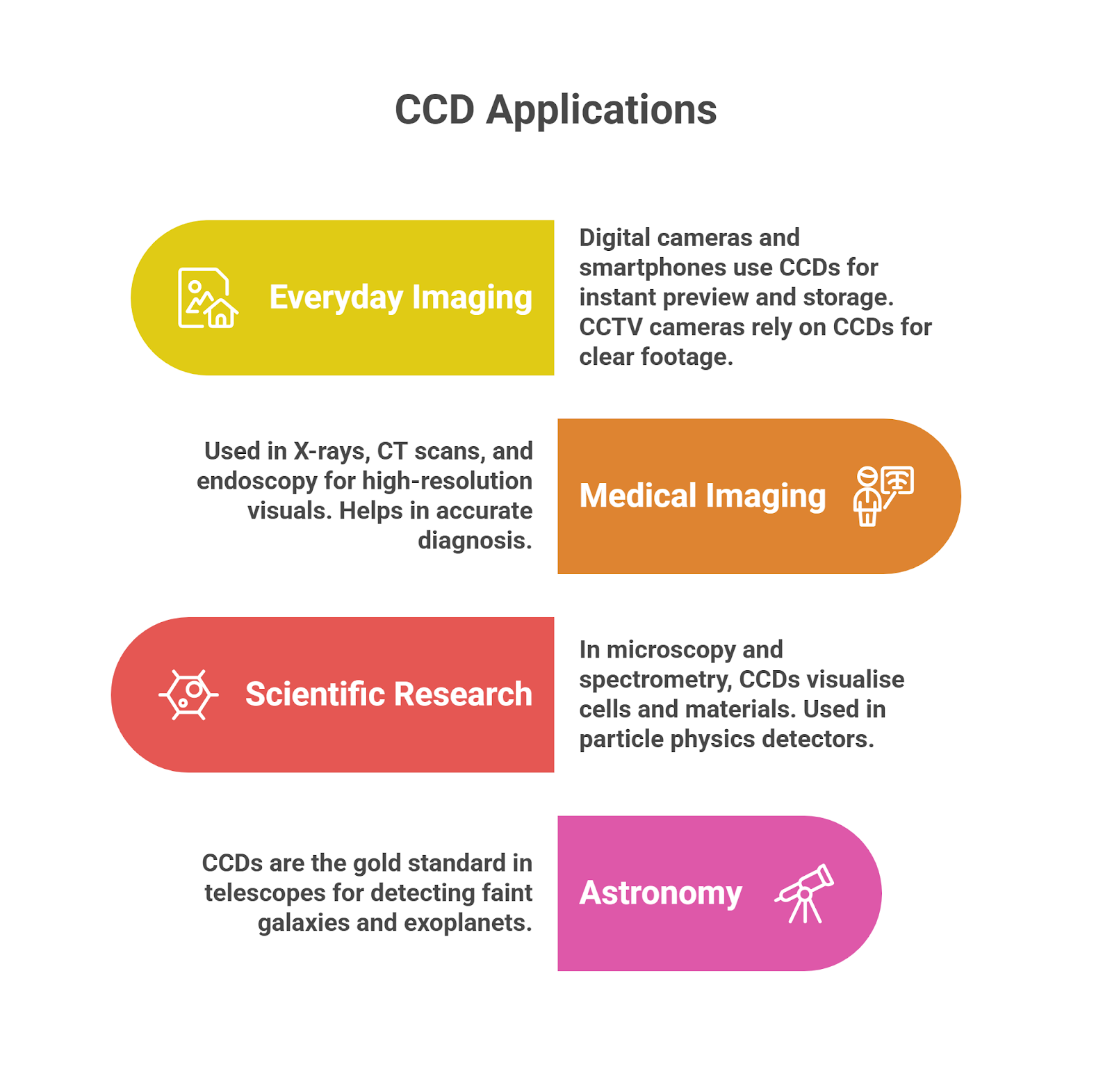Charge-Coupled Devices (CCDs)
How charge-coupled devices revolutionised digital imaging
Context: The charge-coupled device (CCD) was a groundbreaking technology that converted light into electrical signals through an array of capacitors, which sequentially transferred electric charges for image capture.

What is a charge-coupled device (CCD)?
A Charge-Coupled Device (CCD) is a type of image sensor used to convert light into electronic signals. It’s essentially a grid of tiny light-sensitive cells called pixels, each acting like a miniature solar panel:
- When light hits a pixel, it generates an electrical charge.
- These charges are then transferred sequentially across the chip to be read and converted into a digital image.
Invented in 1969 by Willard Boyle and George Smith at Bell Labs, the CCD was originally conceived as a memory device. But its ability to capture light with precision made it a game-changer for imaging technologies. Their invention earned them the 2009 Nobel Prize in Physics.
How does it work?
The functioning of a CCD relies on the photoelectric effect:
- Photon capture – Light photons fall on the semiconductor material of each pixel, freeing electrons proportional to the light’s intensity.
- Charge storage – Each pixel stores this charge, essentially acting like a miniature capacitor.
- Charge transfer – A sequence of voltages applied across electrodes “shuffles” the charges from pixel to pixel, like passing buckets of water along a chain, until they reach the readout register.
- Signal conversion – The charges are converted into voltage, amplified, and then digitised into an image.
This charge-coupling process ensures high precision and sensitivity, making CCDs especially suited for capturing faint or detailed images.
